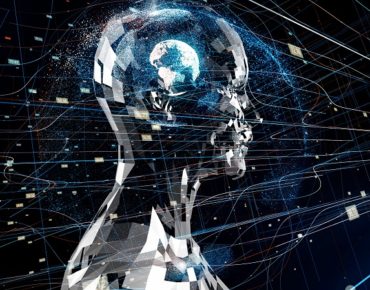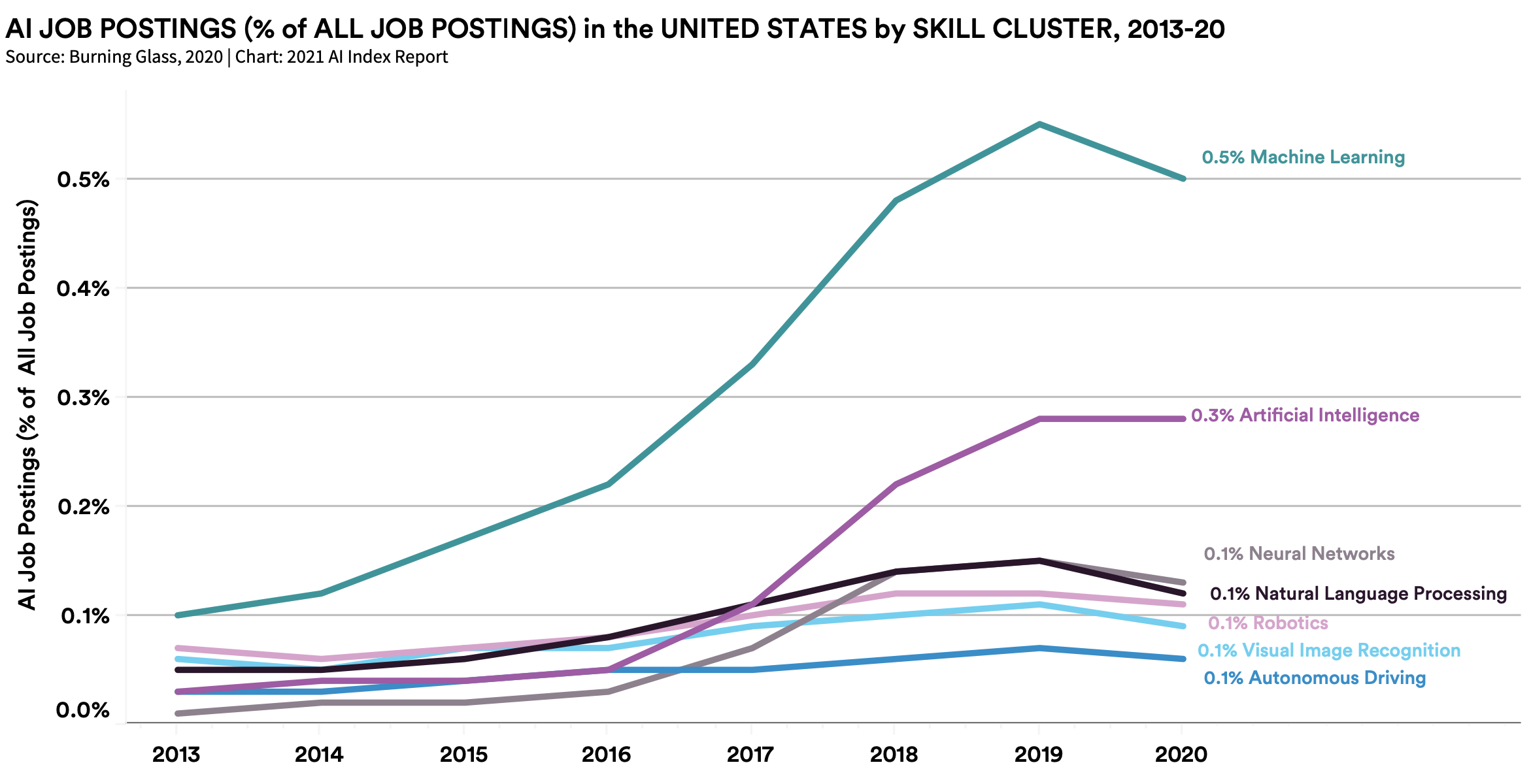Latest 2021 Stanford AI Study Gives Deep Look into the State of the Global AI Marketplace

Despite major disruptions from the ongoing COVID-19 pandemic, global investment in AI technologies grew by 40 percent in 2020 to $67.9 billion, up from $48.8 billion in 2019, as AI research and use continues to boom across broad segments of bioscience, healthcare, manufacturing and more.
The figures, compiled as part of Stanford University’s Artificlal Intelligence Index Report 2021 on the state of AI research, development, implementation and use around the world, help illustrate the continually changing scope of the still-maturing technology. The 222-page AI Index 2021 report, touted as the school's fourth annual study of AI impact and progress, was released March 3 by Stanford’s Institute for Human-Centered Artificial Intelligence.
The report provides a detailed portrait of the AI waterfront last year, including increasing AI investments and use in medicine and healthcare, China’s growth in AI research, huge gains in AI capabilities across industries, concerns about diversity among AI researchers, ongoing debates about AI ethics and more.
“The impact of AI this past year was both societal and economic, driven by the increasingly rapid progress of the technology itself,” AI Index co-chair Jack Clark said in a statement. “With the AI Index, we can actually measure and evaluate the changes, enabling leaders and decision makers to take meaningful action to advance AI responsibly and ethically with humans in mind.”
The Stanford AI index notes, however, that the growing rate of AI investments is being targeted to fewer startups rather than expanding investments throughout the marketplace.
Machine and deep learning advances have meanwhile propelled AI-based technologies like computer vision to industrial-grade status. As the performance of some vision models stall when tested against the largest benchmarks, “companies are investing increasingly large amounts of computational resources to train computer vision systems at a faster rate than ever before,” the study notes.
Among the fastest growing vision applications are object detection frameworks. While China is investing heavily in facial recognition and other AI-based surveillance technologies, the index notes that IBM halted sales last year of facial recognition technology, an acknowledgment of ethical concerns. In addition, algorithmic bias and AI explainability continue to raise ethics issues for developer and trust challenges for enterprise adopters.
Given the current momentum of AI research and adoption, the study notes that AI-based systems are approaching a technological inflection point they dubbed “generative everything,” a reference to the growing fidelity of machine learning models.
“AI systems can now compose text, audio, and images to a sufficiently high standard that humans have a hard time telling the difference between synthetic and non-synthetic outputs for some constrained applications of the technology," the report states. "That promises to generate a tremendous range of downstream applications of AI for both socially useful and less useful purposes. It is also causing researchers to invest in technologies for detecting generative models; the DeepFake Detection Challenge data indicates how well computers can distinguish between different outputs."
Natural language processing (NLP) is also seen having a global economic impact. The AI study notes that Google and Microsoft have both deployed language models based on BERT models into their search engines. (This week, Microsoft debuted a semantic search capability.)
“Progress in NLP has been so swift that technical advances have started to outpace the benchmarks to test for them,” the index revealed. Indeed, the authors said AI benchmarks need to evolve faster in order to keep pace with the rate of innovation.
AI Growing in Academia
The accelerating rate of AI research and deployment is also transforming engineering and computer science education and global labor markets, according to the report. The number of undergraduate and graduate level courses in AI model building has skyrocketed more than 102 percent and 41.7 percent, respectively, over the last four academic years. Moreover, more AI PhD graduates in North America are working in industry as opposed to academic research.
The study also confirms earlier studies that found the majority of U.S. AI doctoral graduates at top universities like Stanford are international students, including many from China. Most choose to stay in the U.S.
According to the Stanford index, the percentage of international students among new AI PhDs rose to 64.3 percent. Of those foreign graduates, more than 81 percent remained in the U.S.
Technical advances and the fierce competition for talent also underscore the strategic nature of AI technology. The AI index emphasized the growth of U.S. AI policy initiatives as its chief technology rival pours billions into AI research.
For example, the U.S. National Security Commission on AI this week submitted its final report to Congress and the Biden administration. Those and other government efforts seek to forge a national AI strategy as the technology permeates nearly sector of the economy. As the AI competition with China shapes strategies, a bipartisan group of U.S. senators introduced legislation on Thursday (March 4) to form a western alliance to counter China’s AI push. The Democracy Technology Partnership Act would establish a U.S. interagency office at the U.S. State Department. Sponsors said the office would seek to create partnerships with western allies “to help set international standards and norms, conduct joint research and coordinate export controls and investment screening on emerging and critical technologies.
“This bipartisan legislation will help foster partnerships among the U.S. and like-minded democratic countries to better protect and compete against China in critical emerging technologies while helping set global rules, standards and protocols for the market,” said Sen. Mark Warner, D-Va., a chief sponsor of the legislation.
Related
George Leopold has written about science and technology for more than 30 years, focusing on electronics and aerospace technology. He previously served as executive editor of Electronic Engineering Times. Leopold is the author of "Calculated Risk: The Supersonic Life and Times of Gus Grissom" (Purdue University Press, 2016).











